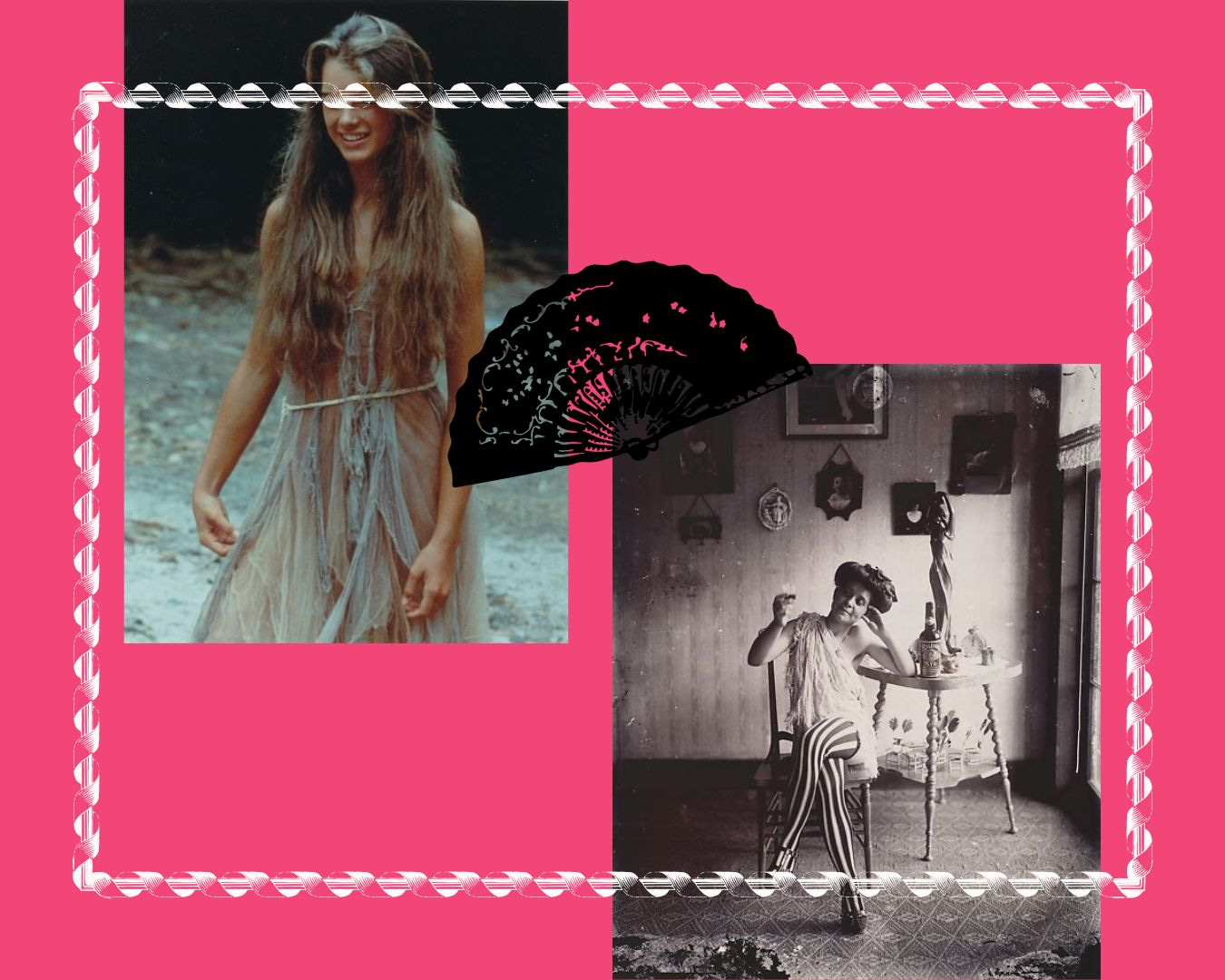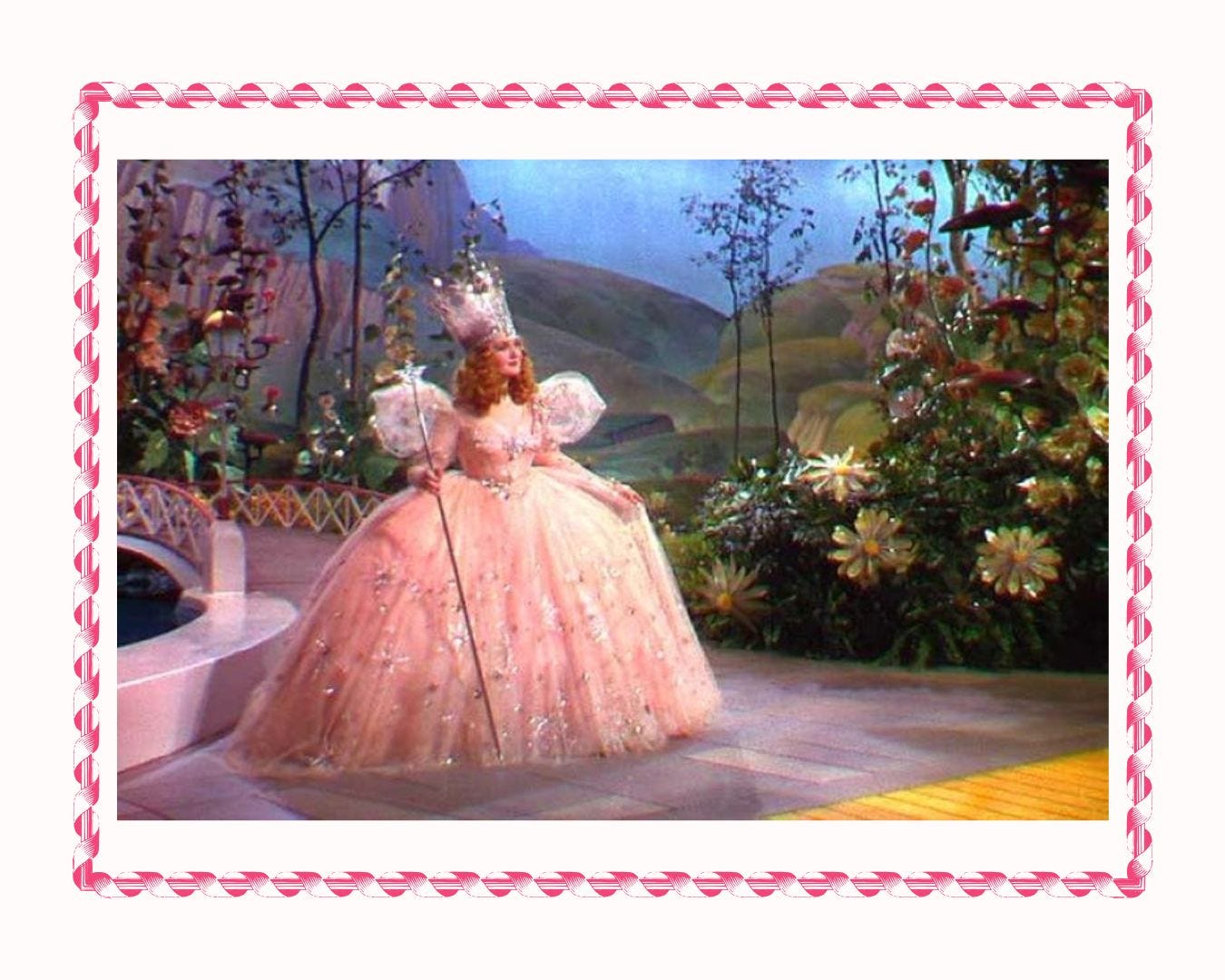DEGREES OF OUTDATEDNESS
Cinema, celebrity, and costume created today's vintage craze.
When I first set out to write this month’s newsletter, I planned to expand upon fashion historian Anne Hollander’s 1979 essay ‘Boom…In Vintage Clothes,’ which was fished from the Vogue archives earlier this year. However, in the near half-century that has passed since the original publication of this essay, no one has better written about the rising popularity of vintage clothing and costumes with as much wisdom or biting wit as Hollander. Even I, someone with patently a lot to say on the topic, know when to admit that something is perfect, 10/10, no notes. The essay also feels especially prescient given that it seems this year’s Vogue World Hollywood will celebrate some of the greatest costume design in cinema history. Never mind that none of us understand what Vogue World is (still!), Hollander’s work is evergreen. I implore you, read it for yourself and see.
In ‘Boom…’, Hollander astutely points out that vintage and antique clothing is never to be popular as a category in and of itself, given the vastness of material held within these categories. Even the whims of a certain decade do not come back in entirety; fashionable culture tends instead to fixate upon one or two past styles at any given moment. I adore Hollander’s observation of the ‘youthful vogue for tired old lace and muslin underwear, which are now worn on the outside for romantically sordid effects—suggesting Bellocq and Brooke Shields’. The exact same fascination with ‘tired old lace’ lives again as a trend today!
Whilst reading the new catalogue that accompanies the V&A’s Marie Antoinette Style, I was struck by senior curator Sarah Grant’s discovery that famed Old Hollywood costume designer Adrian cited Marie Antoinette’s dress as his inspiration for the costume of Glinda the Good Witch in The Wizard of Oz (1939). This feels a bit embarrassing to admit given my lifelong Marie Antoinette fandom, but I had never really connected the Rococo passion for panniers to the frothy-pink, full-skirted fantasy of fairies and princesses in cinema. My contemporary eye is trained to see decorative bodices, bouffants, and ribbons as the covetable revivals of Rococo, but a 1930s audience would have considered the pannier the most wearable and desirable element of Marie Antoinette’s reign. (Though perhaps the incoming pannier revival will change all of this! I can’t wait).
If we are to take Hollander’s word, alongside that of all her great contemporaries, as truth, then: movies are the most powerful driving force in the trends of the 20th century. They are responsible—not singlehandedly but quite persuasively—for the public interest in old clothing. Period films keep past styles alive, available for us to see in vivid colour and constant movement. Cinema provides us with an abundant archive of past material, as we can watch a film from any bygone time and see the clothing of the period just as it was. How, then, does a singular vintage piece like the pannier get plucked from this wealth of material and translated into mainstream dress?
The answers are, of course, manifold, but there is one essential vessel for this translation: the personal style of the movie star. I will now share here a case study of Mae West, Queen of Old Hollywood, Icon of Personal Style, and Passionate Fan of Old Clothing as evidence of how, to quote Hollander, ‘a precise degree of outdatedness’ is made desirable.
Keep reading with a 7-day free trial
Subscribe to OLD FASHIONED to keep reading this post and get 7 days of free access to the full post archives.




